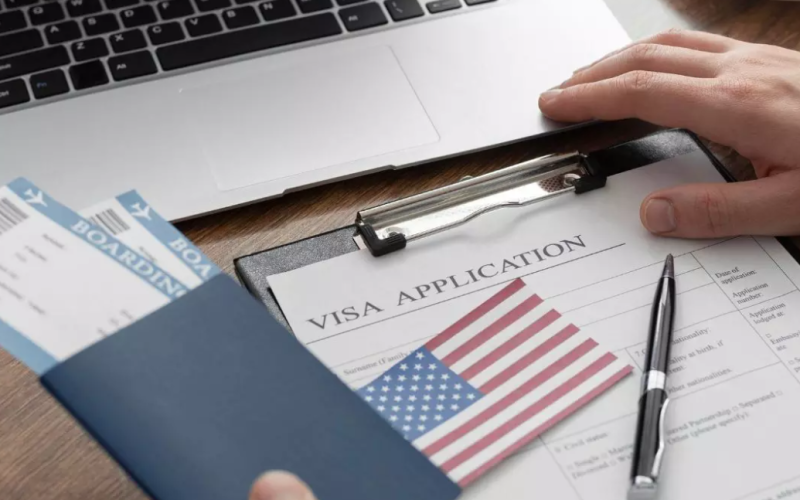When the dream of living in the United States beckons, the road ahead can seem daunting. For countless individuals, the USA represents opportunities, fresh starts, and the allure of the American dream. If you’re a foreigner aiming to make this dream your reality, understanding the immigration process is crucial. This guide will walk you through the essential steps on how to immigrate to the USA.
Benefits of Immigrating To USA As A Foreigner
The United States of America, often described as the “land of opportunity,” has been a beacon for immigrants worldwide. Its rich tapestry of cultures, vast landscape, and ever-evolving economy make it a top destination for many. Below are some of the key benefits of immigrating to the USA as a foreigner:
- Economic Opportunities:
- Job Market: The US boasts a dynamic job market with opportunities in various sectors, from tech to healthcare. The country is home to numerous multinational corporations and hosts a thriving startup culture.
- Higher Wages: For many professions, wages in the US are comparatively higher than in many other countries.
- Entrepreneurship: The US has a supportive environment for startups, making it ideal for entrepreneurs and business-minded individuals.
- Educational Opportunities:
- World-Class Institutions: The US houses many top-ranking universities and educational institutions, offering quality education and research opportunities.
- Diverse Study Options: From arts to sciences, there are countless courses and degrees available to cater to all academic interests.
- Scholarships and Financial Aid: Many institutions offer scholarships, grants, and financial aid to international students.
- Cultural Diversity:
- Melting Pot: The US is renowned for its cultural diversity, with immigrants from every corner of the world. This multicultural environment fosters understanding and acceptance among different ethnic groups.
- Expanding Horizons: Living amidst such diversity can lead to personal growth, better global understanding, and broader horizons.
- Quality of Life:
- Healthcare: While healthcare in the US is a topic of debate, there’s no denying the country’s medical research and specialized treatment facilities are among the best in the world.
- Infrastructure: Modern cities, advanced public transportation systems, and well-maintained public spaces enhance living standards.
- Safety and Law Enforcement: With an established judicial system, the rule of law is upheld, and rights are generally protected.
- Family Benefits:
- Reunification: The US immigration system has provisions allowing citizens and green card holders to sponsor family members for immigration.
- Education for Children: Children, including those of immigrants, have access to public education. The diverse educational environment can also provide a comprehensive learning experience.
- Natural Beauty and Recreation: From the beaches of California to the mountains of Colorado, the US offers a vast landscape full of natural wonders and recreational activities.
- Personal Rights and Freedoms: The US Constitution ensures several personal rights, including freedom of speech, religion, and assembly. Such rights are an integral part of American society.
- Potential for Citizenship: After meeting certain requirements, immigrants have the opportunity to become naturalized US citizens, enjoying all the rights and benefits that come with it.
- Innovation and Research: The US is at the forefront of technology, innovation, and scientific research, offering opportunities for those inclined towards these fields.
- Networking: The vast and diverse population provides immense networking opportunities. This can be especially beneficial for business professionals and entrepreneurs.
Immigration Pathways For Foreigners Relocating To USA
The U.S. offers a range of immigration pathways for foreigners wishing to relocate. Here’s a comprehensive overview of the primary avenues:
1. Family-Based Immigration
- Immediate Relatives of U.S. Citizens: This includes spouses, unmarried children under 21, and parents of U.S. citizen petitioners 21 or older.
- Family Preference Categories: These are for specific family relationships with a U.S. citizen or a Lawful Permanent Resident (LPR), such as unmarried sons or daughters of U.S. citizens or spouses of LPRs.
2. Employment-Based Immigration
- EB-1: For people with extraordinary ability in certain professions (arts, sciences, education, business, or athletics), outstanding professors and researchers, or certain multinational managers and executives.
- EB-2: Professionals with advanced degrees or persons with exceptional ability in the arts, sciences, or business.
- EB-3: Skilled workers, professionals, or unskilled workers.
- EB-4: Certain special immigrants like religious workers, employees of U.S. foreign service posts, retired employees of international organizations, other classes of aliens, and more.
- EB-5: For investors who invest a certain amount of money in the U.S. and plan to create or preserve 10 permanent full-time jobs for qualified U.S. workers.
3. Refugees and Asylum Seekers
- Refugees: People outside of their country who are unable or unwilling to return due to persecution or a well-founded fear of persecution based on their race, religion, nationality, social group, or political opinion.
- Asylum: For people already in the U.S. or at a port of entry who are unable or unwilling to return to their home country for similar reasons as refugees.
4. Diversity Visa Lottery
Each year, the U.S. offers up to 50,000 visas to people from countries with historically low rates of immigration to the U.S. Eligibility is determined by nationality, and there are no family or employer sponsorships involved.
5. Student and Exchange Visas
- F-1 Visa: For students attending a full-time degree or academic program at a school, college, or university in the U.S.
- M-1 Visa: For students enrolled in non-academic or vocational programs.
- J-1 Visa: For those participating in approved cultural exchange programs.
6. Temporary Work Visas
- H-1B: For people in a specialty occupation, which typically requires a higher education degree.
- H-2A: For temporary agricultural workers.
- H-2B: For temporary non-agricultural workers.
- L-1: For intra-company transferees.
- O-1: For individuals with extraordinary ability or achievement.
- P Visas: For certain athletes, entertainers, artists, and essential support personnel.
7. Other Categories
- U Visa: For victims of certain crimes who have suffered abuse and can help law enforcement and government officials in the investigation or prosecution of the criminal activity.
- T Visa: For those who have been trafficked into the U.S. and are willing to assist in an investigation or prosecution of human trafficking.
- K-1 Fiancé(e) Visa: For the foreign-citizen fiancé(e) of a U.S. citizen.
Given the complexity of U.S. immigration law, it’s always recommended to consult with an immigration attorney or expert when considering any of the pathways mentioned. They can provide guidance tailored to individual circumstances.
How to Immigrate to the USA As a Foreigner
1. Understanding US Immigration Categories
The U.S. government provides several immigration pathways based on distinct categories:
- Family-Sponsored Visas: If you have close relatives in the USA, they might be able to sponsor your visa. Family-based categories include spouses, children, parents, and siblings of U.S. citizens and permanent residents.
- Employment-Based Visas: These are for individuals with job offers in the USA. There are various sub-categories based on the nature and level of work.
- Refugee and Asylum: This is for individuals fleeing persecution due to race, religion, nationality, or membership in a particular social group.
- Diversity Visa Lottery: Annually, the U.S. government provides 50,000 visas via a lottery to individuals from countries with historically low numbers of immigrants.
2. Choose the Right Visa
The visa you’ll need depends on your reasons for immigrating:
- Green Card (Permanent Resident Card): It allows you to live and work in the U.S. indefinitely. Green Cards can be obtained through family, employment, refugee/asylum status, and other categories.
- Work Visas: H1-B, L-1, O-1, and E-2 are some of the common types of work visas, each with its criteria and limitations.
- Student Visas: F-1 and M-1 visas are for those pursuing academic or vocational courses, respectively.
3. Filing the Necessary Forms
Once you’ve determined the right visa, you’ll need to file the appropriate forms:
- Form I-130 (Petition for Alien Relative): This is filed by a U.S. citizen or permanent resident to establish the relationship with the intending immigrant.
- Form I-140 (Immigrant Petition for Alien Worker): Employers file this for foreign workers they intend to employ permanently in the U.S.
- Form DS-260 (Online Immigrant Visa Application): All immigrant visa applicants, regardless of age, require this form.
The specific forms and documentation you need might vary, so always ensure you’re completing the right ones for your circumstances.
4. Attend the Medical Examination and Visa Interview
Before the visa is granted, you’ll need to undergo a medical examination by an approved panel physician. You will also be scheduled for an interview at a U.S. embassy or consulate.
5. Pay Necessary Fees
Visa application fees vary depending on the category. Ensure to check the current fees on the official U.S. immigration website and make payments as instructed.
6. Wait for Visa Processing
Processing times differ based on visa type, country of origin, and other factors. Regularly check your application’s status online.
7. Plan Your Arrival and Adjust Your Status
Once your visa is approved, plan your journey to the USA. If you’re on a temporary visa and wish to become a permanent resident later, you’ll need to adjust your immigration status after arrival.
Conclusion
Immigrating to the USA is a significant step filled with numerous legal and procedural nuances. While this guide provides a basic roadmap, always consider consulting with an immigration attorney to navigate complexities. With patience and thorough preparation, the dream of calling the USA home can become a reality.





